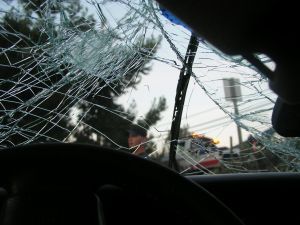In personal injury cases, plaintiff’s degree of fault in the incident can impact the size of damages awarded and, in some states, preclude an injured party from receiving anything at all.

Our Fort Lauderdale car accident lawyers know Florida follows the pure comparative negligence model. It’s one of the models that most favors injured parties, and holds that even when a plaintiff is at fault to some degree, he or she can still recover damages, minus the degree of fault. So if the defendant driver is found to be 65 percent at fault for the crash and the plaintiff 35 percent, the plaintiff will only be allowed to collect 65 percent of the damages claimed.
Determining the degree of fault of a defendant is a question for the jury, and one reason why it’s important to have an experienced lawyer to litigate your case.
In the recent case of Carman v. Tinkes, et al., failure to prove a greater degree of fault on the part of the defendant resulted in no damages awarded to the plaintiff estate. The case, heard on appeal by the U.S. Court of Appeals for the Seventh Circuit, arose from a fatal crash that occurred in Indiana. That state follows a model of modified comparative fault, which holds a car accident plaintiff can collect damages so long as he or she is not more than 49 percent at fault for the crash.
Here, a driver was traveling early one April morning in 2011, while it was still dark outside. He reportedly did not have his headlights on, and as he approached a red light at an intersection, he failed to slow down or attempt to stop. In doing so, he struck the rear corner of a commercial pickup truck. The driver in that vehicle did have his lights on.
The impact was devastating, with the entire driver’s side of the first vehicle completely torn off. The driver was killed.
His estate filed a federal lawsuit claiming negligence by the truck’s driver, his employer and the owner of the truck.
Disputed in the case was what the commercial truck was doing at the time of the crash. One witness indicated the truck was fully stopped, completely in the left turn lane. However, another witness testified the truck was partially in the straight lane, but was pulling into the left turn lane in front of a similar truck that was farther back in the turn lane.
In the complaint, the plaintiff estate relies largely on the testimony of the second witness. However, the appellate court indicated that even assuming this version to be true, the lower court was correct in granting summary judgment to the defendants.
The plaintiff asserted the commercial truck driver was in violation of traffic laws at the time of the crash, making him negligent and at least partially at fault for the collision. The second assertion was that a metal bumper on the commercial truck was “after market,” creating a hazardous condition that resulted in a serious accident becoming fatal.
State laws do prohibit vehicles from passing on the right, except under certain circumstances. The estate asserts the commercial driver was illegally passing on the right, and that this constituted an unsafe lane change.
The district court found that while a jury could reasonably find this to be true, it still did not mean the violation caused the fatal crash. The violation of a statute is not cause for liability, the court ruled, unless injury was at least to some degree a result of that violation.
This same kind of theory applies in certain drunk driving cases, where a driver involved in an injury-causing crash is found to have been drunk, but wasn’t at-fault for the crash. The drunk driver may be criminally charged with DUI, but his or her liability for the injuries could be limited.
Here, the court found no evidence to indicate that if the commercial trucker hadn’t begun pulling into the turn lane, the other driver would not have hit him.
On the second theory of negligence, regarding the after-market bumper, the court found that despite it not being installed by the maker of the vehicle, it did comply with all regulations. For a plaintiff to prove negligence in this regard, the estate would have had to prove the bumper was so hazardous that having it on the vehicle was a breach of duty of care, even though it met regulations. Or alternatively, that if the truck had been equipped with a different bumper, the decedent’s death would have been prevented.
Because the estate offered no such evidence of either, the grant of summary judgment for the defense was affirmed.
Call Fort Lauderdale Injury Attorney Richard Ansara at (954) 761-4011. Serving Broward, Miami-Dade and Palm Beach counties.
Additional Resources:
Carman v. Tinkes, et al., May 27, 2014, U.S. Court of Appeals for the Seventh Circuit
More Blog Entries:
Compulsory Medical Exams at Issue in Florida Personal Injury Cases, Aug. 1, 2014, Fort Lauderdale Car Accident Lawyer Blog
 Broward Injury Lawyer Blog
Broward Injury Lawyer Blog



